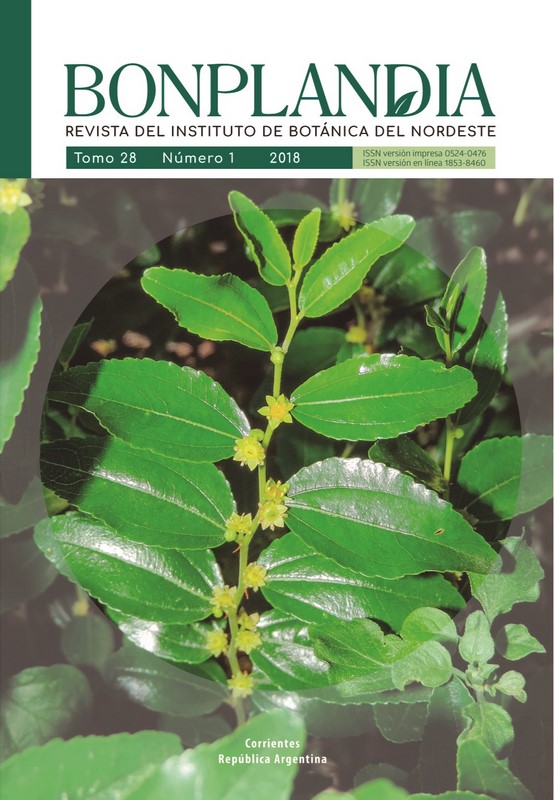Las plantas en la alimentación de pobladores rurales de los ambientes serranos de La Calera (Dpto. Colón, Córdoba, Argentina). Una perspectiva etnobotánica diacrónica
DOI:
https://doi.org/10.30972/bon.2813573Palabras clave:
Alimentación, diacrónica, etnobotánica, plantas comestibles, ruralidadResumen
El trabajo propone caracterizar el rol de las plantas alimenticias en pobladores rurales campesinos de los ambientes serranos de una localidad de las Sierras Chicas de Córdoba. En lo metodológico se siguió un proceso de investigación y de obtención de datos etnobotánicos a campo, combinando metodologías de las ciencias sociales y naturales y recurriendo a la complementariedad de los análisis cualitativos y cuantitativos. Se aplicaron encuestas semiestructuradas en 30 unidades domésticas y 14 entrevistas en profundidad. Se documentaron 36 especies y 42 aplicaciones alimenticias diferentes, sin incluir las hortalizas y
verduras de cultivo; así como 121 preparados alimenticios tradicionales y actuales. Una gran
cantidad de prácticas culinarias, recetas y platos tradicionales compilados en este trabajo coinciden con el inventario de mediados del siglo pasado para el folklore de la comida cordobesa. En lo que concierne al cambio en materia de alimentación, se visibilizan particularmente las razones socioculturales relacionadas a transformaciones en el estilo de vida, antes que motivos ambientales. Finalmente se observan recetarios cada vez menos diversificados, pérdida de ingredientes y del uso de cultígenos tradicionales en la culinaria doméstica
Descargas
Publicado
Cómo citar
Número
Sección
Licencia
Declaration of Adhesion to Open Access
- All contents of Bonplandia journal are available online, open to all and for free, before they are printed.
Copyright Notice
- Bonplandia magazine allows authors to retain their copyright without restrictions.
- The journal is under a Creative Commons Attribution 4.0 International license.















.jpg)


